Teach Me!
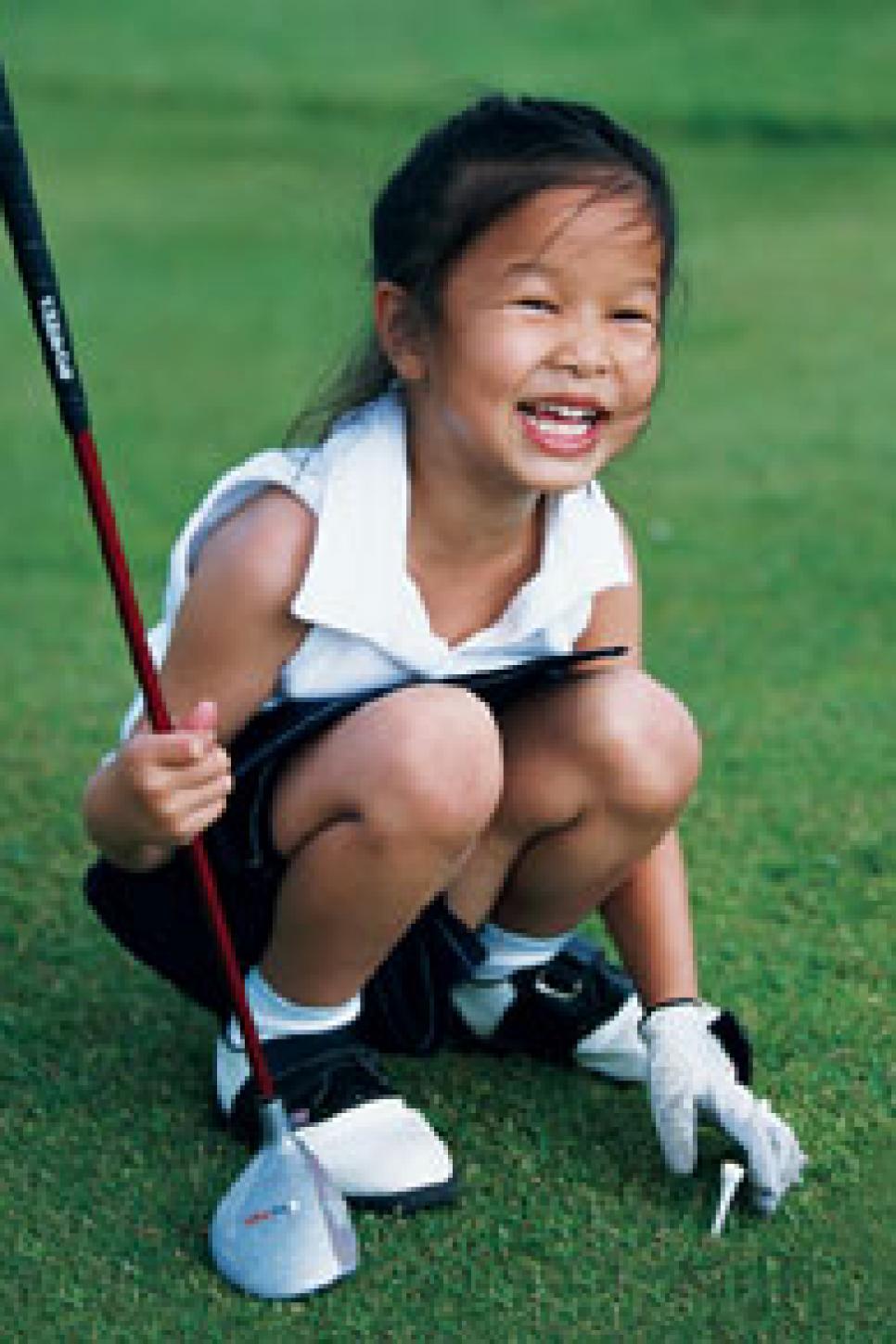
The smiling prodigy you see here is Bing Singhsumelee. She is 6 years old, lives in a Chicago suburb, plays the violin and just started figure skating. She also is a golfer who has the best swing for a child I've seen in 30 years of teaching. Watching Bing hit balls is a breathtaking experience. At 40 pounds, Bing drives the ball 75 yards, dead straight, virtually every time. She putts like a dream.
Though Bing's technique is almost flawless, what her parents and I are most proud of is her outlook on the game. To Bing, golf is fun, pure and simple. She is blithely unaware of the game's frustrations. It is all a joy. She's learning the game the right way.
Teaching young children is a privilege and a huge responsibility. The challenge is to cultivate their skills while sustaining their interest and preserving the joy. Over the years, I've come up with 10 rules that every parent and instructor should apply in a child's formative years. The reward is a happy smile and the knowledge you've given them a game they'll enjoy for a lifetime.
1. Let the child call the shots
We all want our children to learn the game the right way. As golfers, we also have firm notions as to what the "right" way is and tend to teach by rote, as if we were in school.
For a young child, this is not the way to go. Learning the correct grip may be fundamental, but to a fertile, inquisitive mind, the grip can be drudgery. The kid just wants to have fun. Let them explore the game on their own at the outset. Follow them around and explain the things they're curious about. The rule of thumb is this: You are there to do what they want to do, not what you want them to do.
2. Do more 'playing' than teaching
A 6-year-old's attention span is excruciatingly short. They don't really focus until the ball is on the tee, waiting to be struck. With that, the lesson should not last longer than 30 minutes. Furthermore, the 30 minutes should be broken down into 10 minutes of actual teaching and 20 minutes of playing. I don't mean playing in the golf sense; I mean drawing faces on your golf gloves or playing catch with a golf ball. The idea is for the child to equate going to the golf course with amusement. This may be difficult, especially if you're paying for the lesson. But the kid will gravitate toward learning golf in good time.
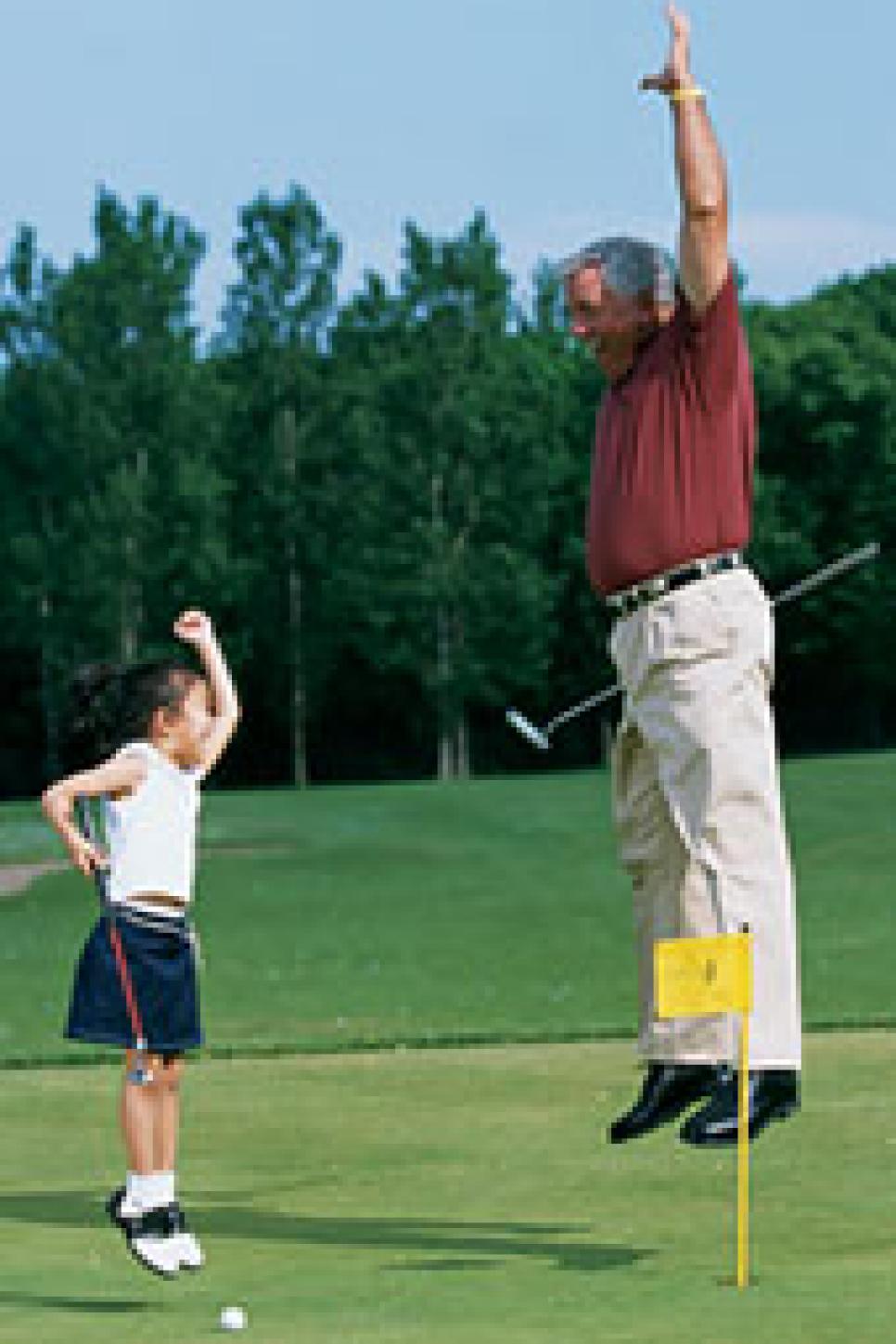
3. Share the joy of a job a well done
When Bing does something well, I don't just commend her. We celebrate. We jump up and down. Enthusiasm and excitement, felt and expressed without restraint, increases the child's desire to please, learn and excel. The best way to boost a kid's ego is to diminish your own. I found this out when my own children were small, and it works wonders with Bing.
Act like a kid again. Simply do what a child does -- smile and laugh a lot. I leave nothing in the bag. I've done a one-minute puppet show with my headcovers. I've talked in rhymes. Anything to make being with the instructor, and learning how to play golf, more appealing for the child.
4. Communicate on their level
Everything you say should be expressed at the child's level, and I mean that literally. Don't stand when you talk; kneel down and look the child in the eye. Watch what you say, and how you say it. Even adults struggle with terminology, so I really simplify things for Bing. Rather than say "wide arc," I say "big circle." Instead of challenging her to make a "descending blow," I ask her to "thump the ground." She doesn't "pivot," she "turns." Children must comprehend an idea before they can execute it.
Don't let a small thing grown-ups take for granted -- like sticking a tee in the ground -- become a frustration. Be ready to lend a helping hand.
5. Tee it up in more ways than one
To establish an early pattern of success, I insist on teeing the ball on every shot with every club. With Bing that was an adventure. Her tiny thumb wasn't strong enough to insert the tee into the ground. Once she got the tee in, it was too crooked to hold the ball. Even when I straightened the tee for her, balancing the ball atop it was a big test for her. Have some empathy. Tasks we take for granted -- putting on a glove and fastening it, for example -- are tough for kids. Be ready to help at every turn.
6. Visual is better than verbal
Don't explain the point, show it. Like most children, Bing initially held the club with a very weak left-hand grip.
I could have told her to aim the "V" over her right shoulder, but that only would have confused her. So I marked the tips of her fingers with blue dots and told her that when she looked down at address, only the dot on her pinkie should show. Bing grasped this immediately. In fact, when she shows up for her lesson we "wave" to each other with our pinkie fingers.
7. Safety first, last and always
Children tend to act first and think later. In golf, the consequences of a misstep can be dire. Use these ABCs of rules to ensure a safe passage:
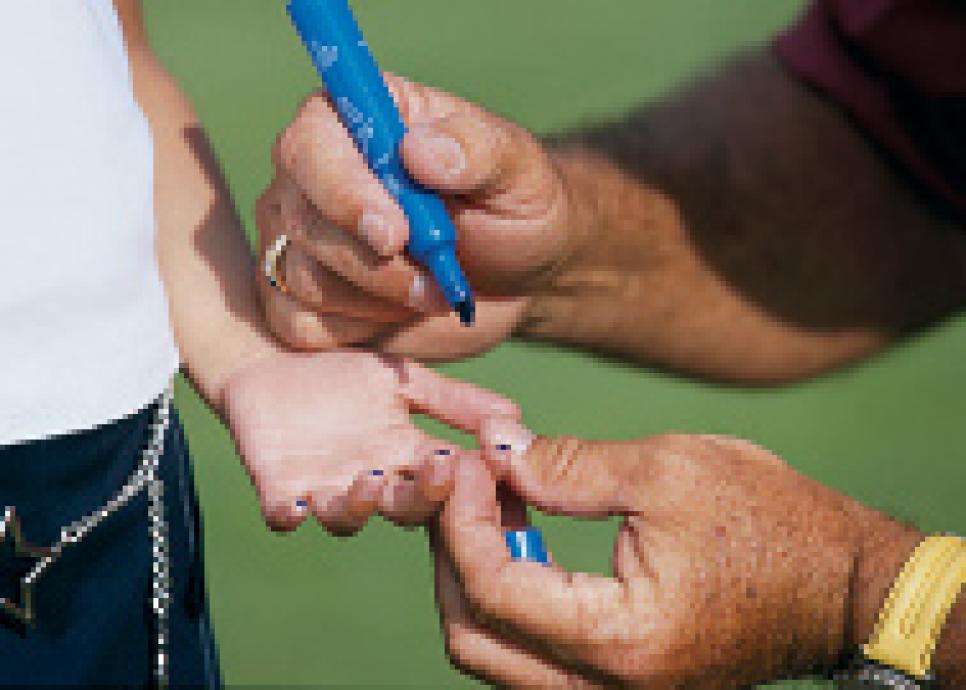
A. Keep the child in your line of sight at all times. On the range, the child should occupy the stall in front of you, never the one behind.
B. Draw an imaginary line three feet in front of the spot the child is hitting from, and tell the child, emphatically, never to walk in front of it.
C. Kids don't drive the cart. They don't sit alone on the passenger side. They sit right next to you or on your lap.
8. There is no such thing as criticism
In a child's simplistic world, events are classified as either "fun" or "not fun." Criticism is not fun. It implies the child did something wrong, as opposed to merely doing something incorrrectly. In golf as in life, the path forward is paved with praise. If they hit a good shot, you say, "Good shot." If they hit a bad shot, you say, "Good swing." When you detect a flaw, you challenge them to make the correct move without verbally identifying the bad one.
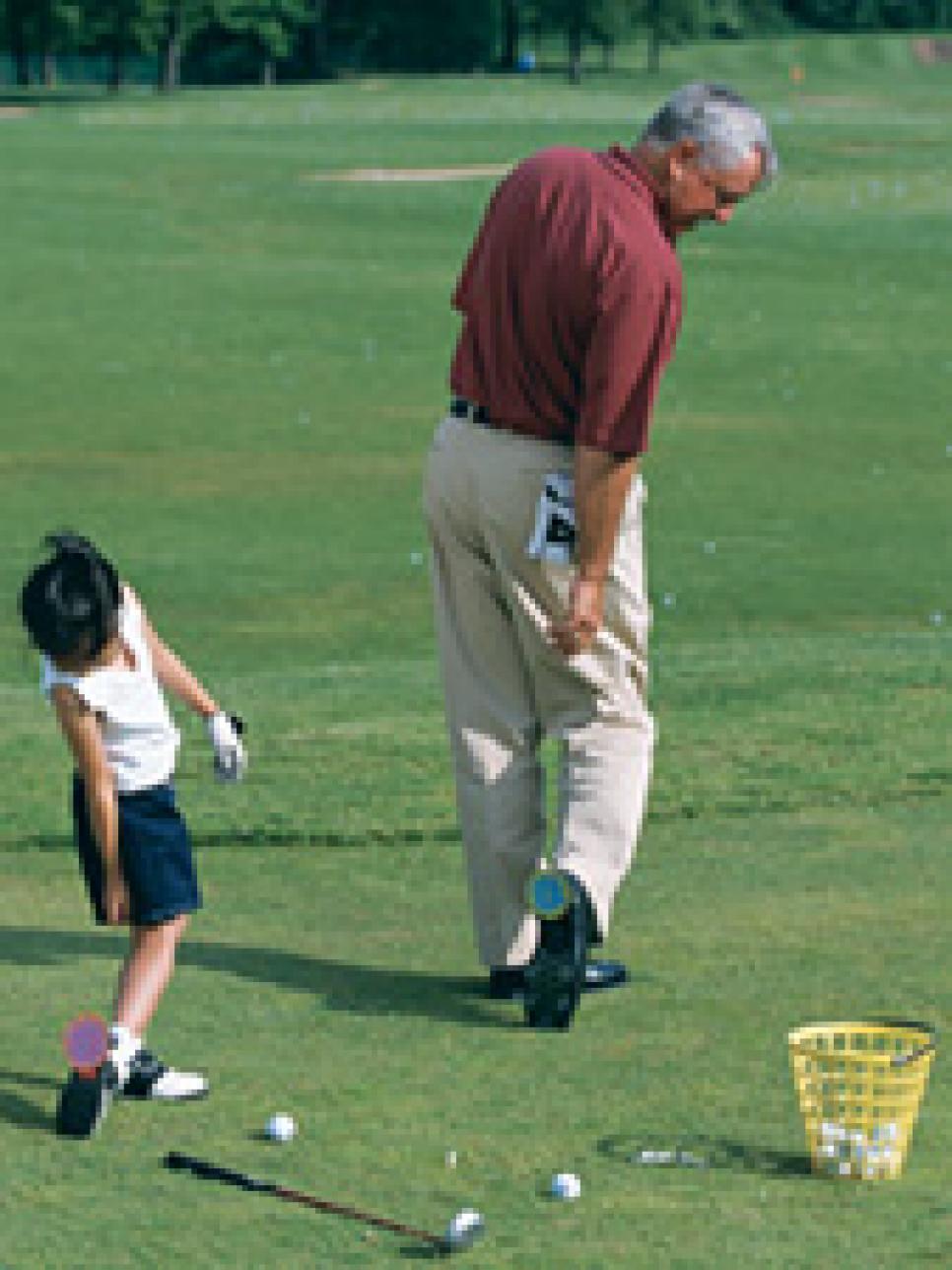
It's psychological. Remember, the reason kids hate cleaning their room is because they made it messy -- did something wrong -- to begin with. It's impossible to mess up a room on the golf course.
9. Think of creative ways to teach technique
Lightweight children's clubs are a vast improvement over the sawed-off sledgehammers we fashioned in the old days. Still, little kids don't have the strength, balance or mass to swing the club like an adult. A little creativity will help overcome these issues. Bing's small size makes shifting her weight to her left side difficult. To show her the right move, I cut two illustrations of the sun from the back of a cereal box and taped them to the heels of our shoes. I made a swing and showed Bing my sun, and challenged her to do the same for me. She can only pull it off by making a good weight shift, and she's getting better at it.
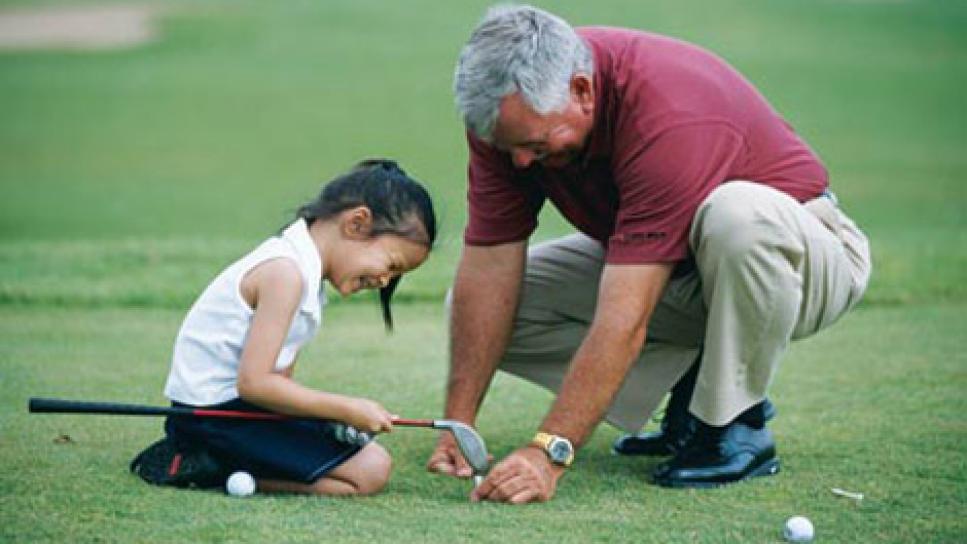
10. Make a big deal out of the short game
It's rare to see an adult who uses the practice green as much as the practice range. This chronic neglect of chipping and putting is a mistake you don't want to make with a young child. The rule is this: Never walk past the practice green with a child. Walk on it, then use it. Heighten the child's curiosity about this vital part of the game, and then let the child pursue it.
This is the place to introduce kids to competition. They love chipping and putting contests. You might consider losing on purpose, though with Bing, my best often isn't good enough.